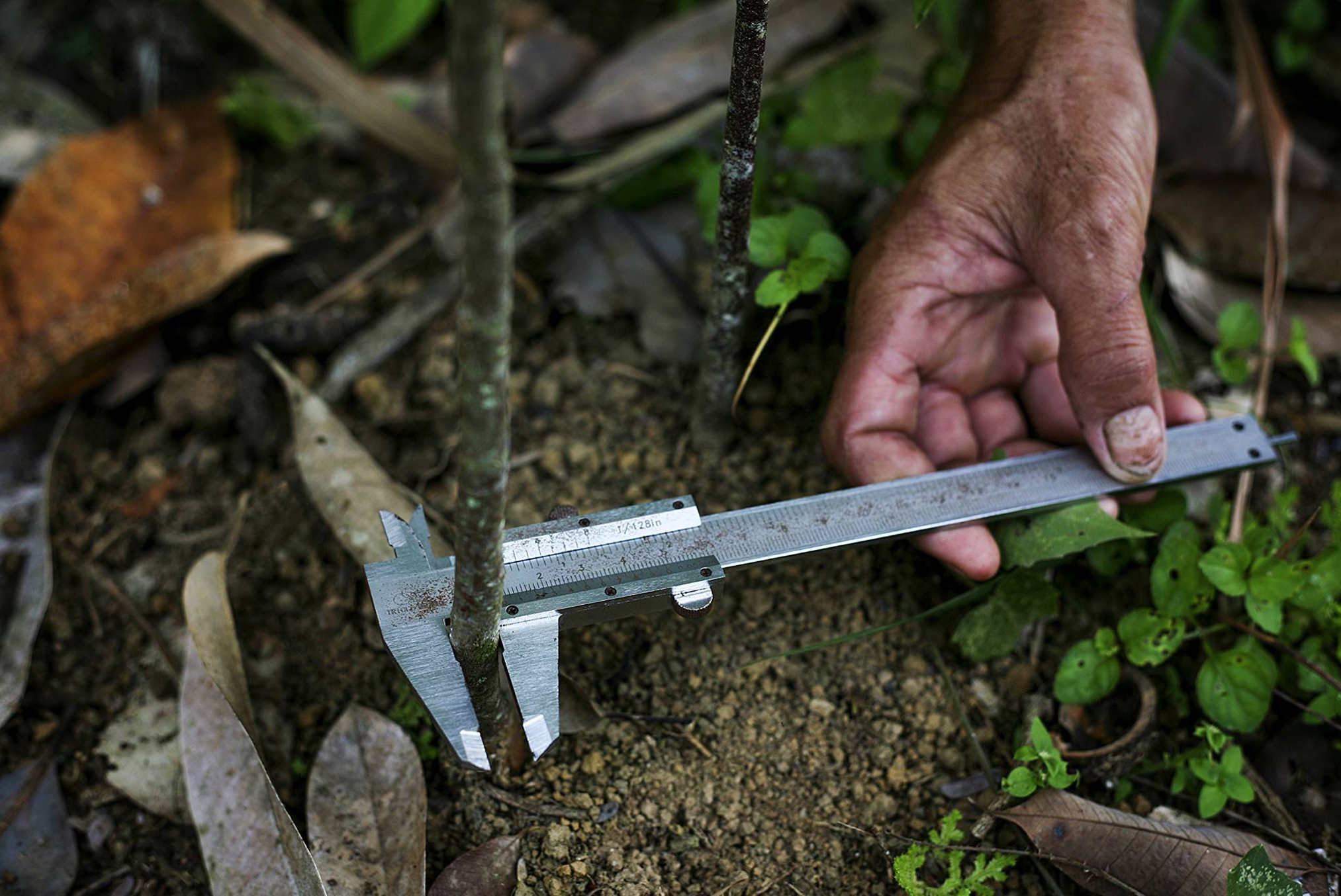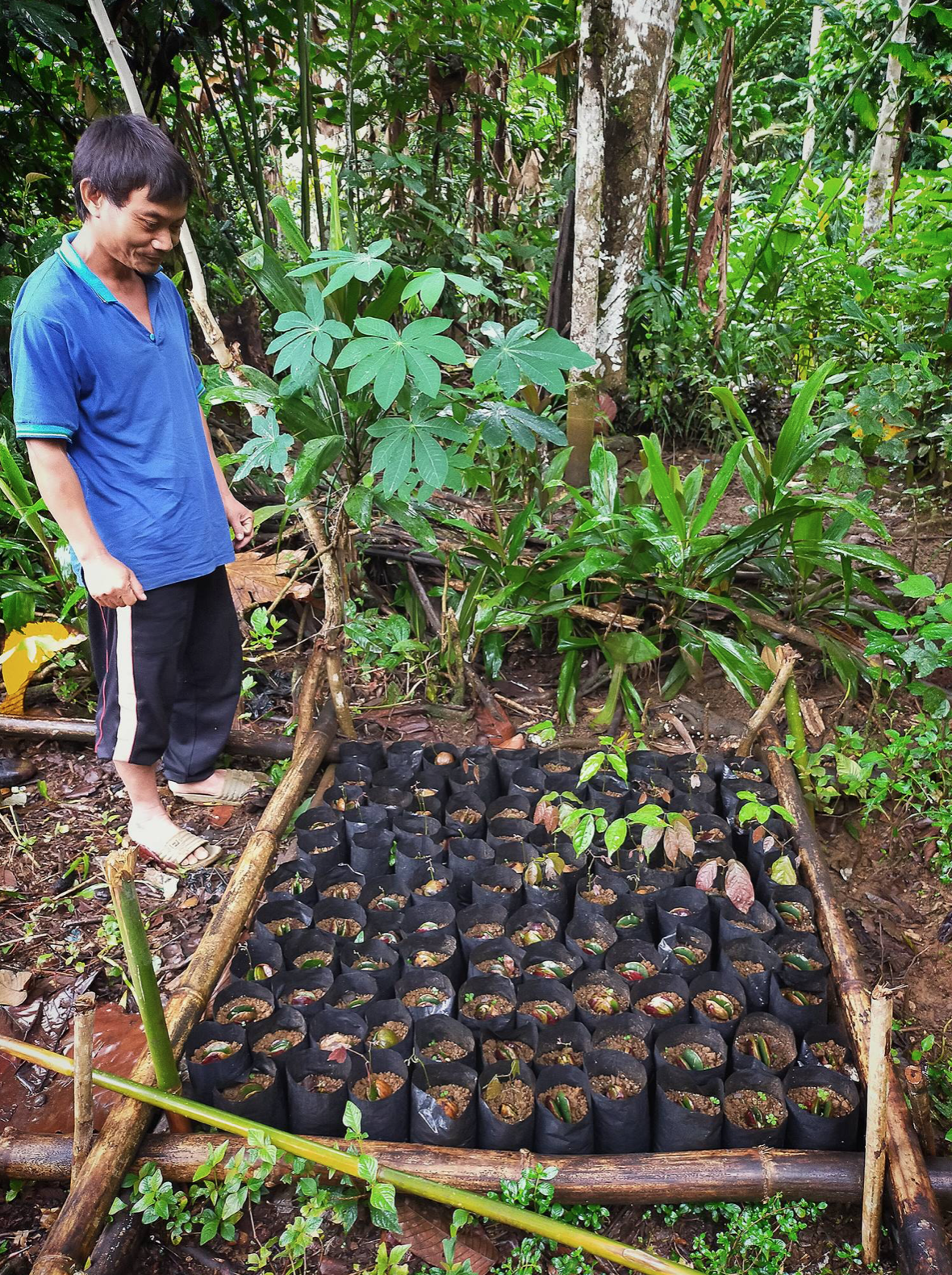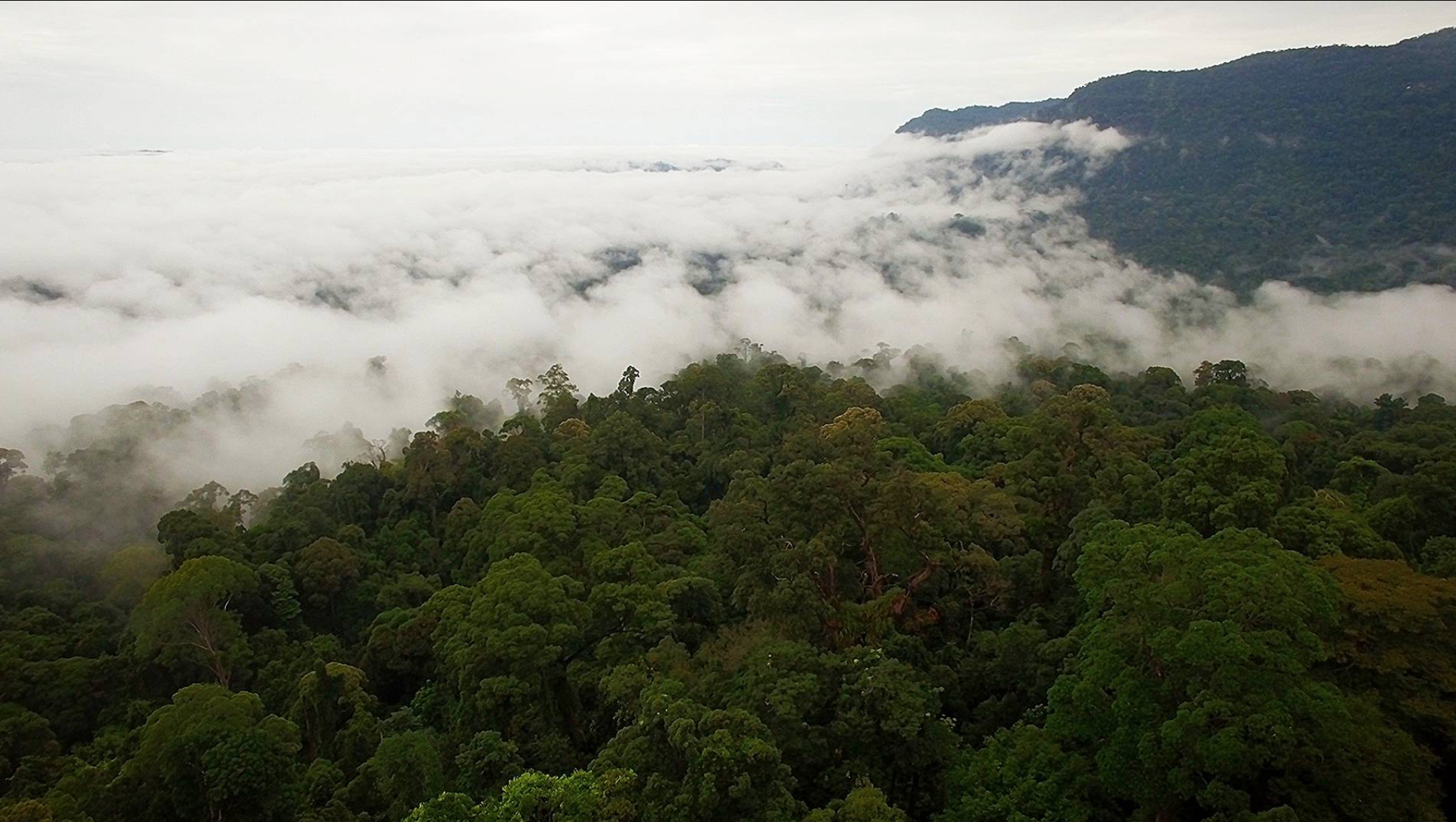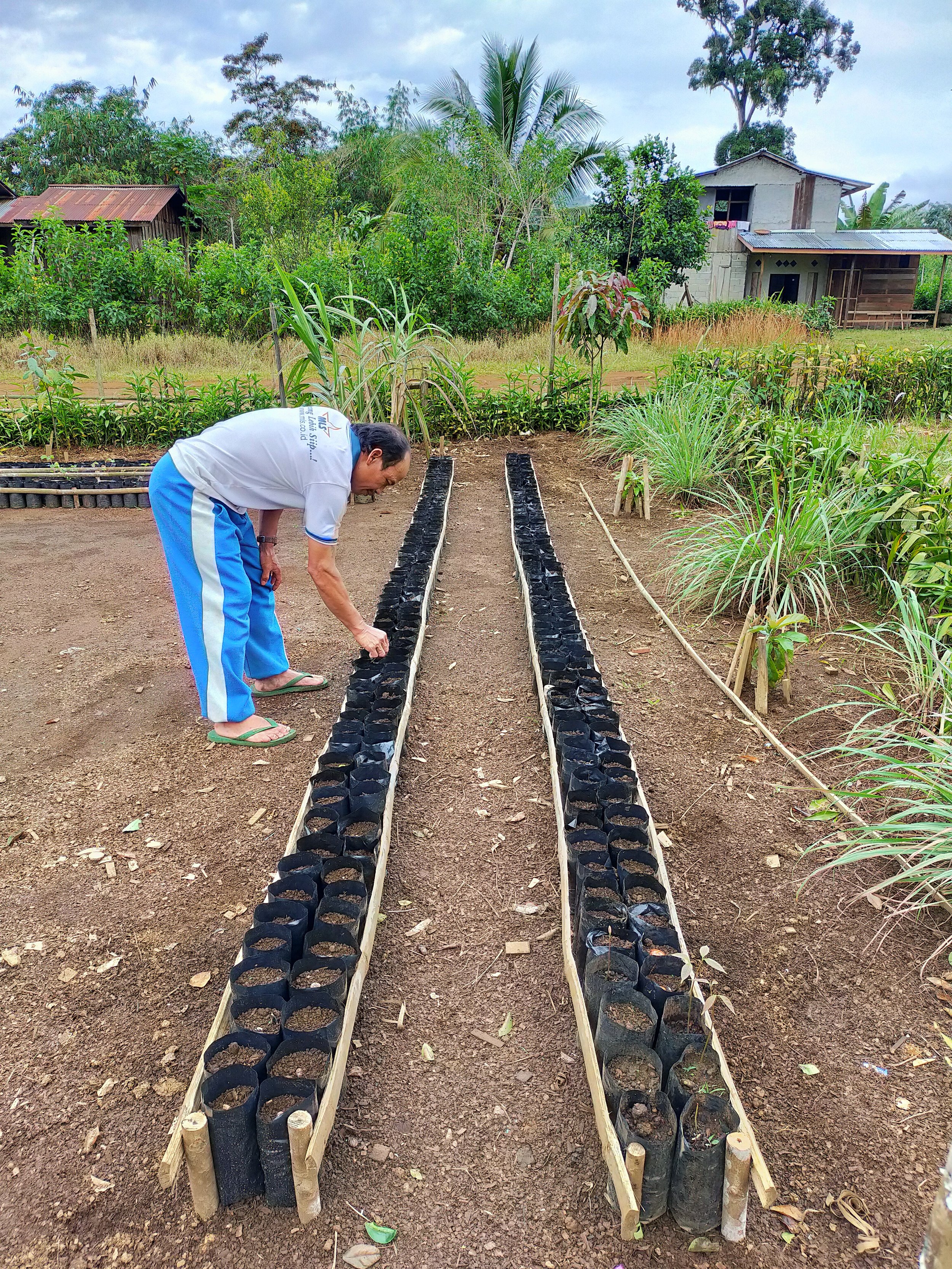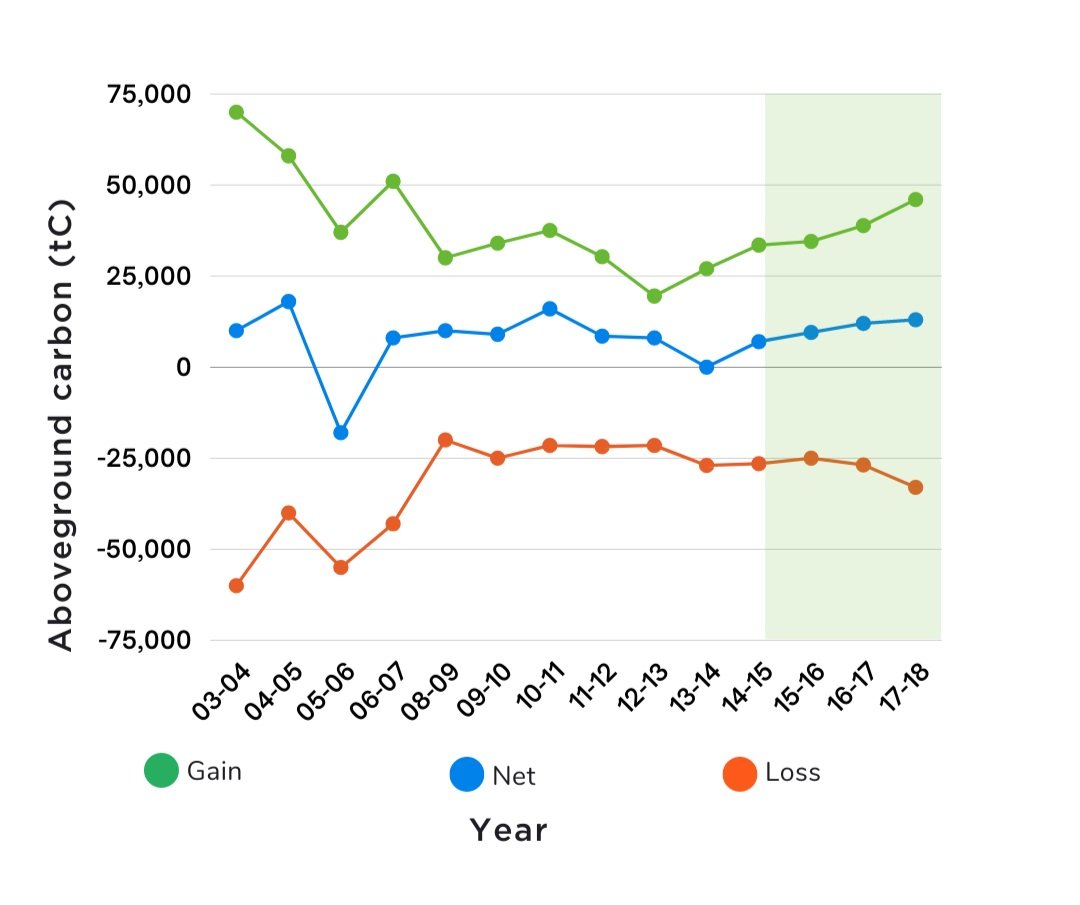Indigenous forest management combating climate change: Gunung Nyiut
"For all the community - let’s grow together, fight together, and prosper together” – Sudirman, lead farmer from Bentiang Madomong Village.
The Gunung Nyiut Penrissen Forest Complex is among the last remaining forested landscape along the West Kalimantan – Sarawak, Malaysia border. The location of Gunung Nyiut makes it a prime target for illegal enterprises that harvest natural resources and, in the last two decades, the forest has been under threat from deforestation. This primary forest region is not only important habitat for biodiversity, maintaining water supplies and protecting human health, but it is also critically important in mitigating climate change.
When Planet Indonesia first began working in Gunung Nyiut in 2015, we recognized the conflicts and issues that both drove and resulted from deforested and degraded land. This is why we have been working with Indigenous Dayak communities to co-manage this reserve with government agencies to reduce deforestation. In that time we have seen a 77% reduction in forest loss, in part due to improvements in local livelihoods, health, education, and climate-smart agricultural farming practices. During that time we also partnered with villages to implement agroforestry programs and drive natural reforestation efforts.
Sudirman, from the Bentiang Madomong Village - a community of over 1,000 people, is one such partner. He is head of the lead farmer group that we support and works with the community to increase the practice of sustainable farming and agroforestry techniques to build systems that support forest regeneration. Village-led conservation efforts have seen the planting of 68,500 trees of 46 different species in degraded forest land, ensuring the forests that remain standing are healthier and denser.
But how does this community forest management effort mitigate against climate change globally? We have recently been working with the team at Health in Harmony through Rainforest Exchange and the Woodwell Climate Research Center to undertake a geospatial analysis to calculate the carbon sequestration of Gunung Nyiut over the last two decades and analyze the changes.
Biological carbon sequestration is the storage of carbon dioxide from the atmosphere deep within the tissues of plants.
In 2003, the Gunung Nyiut Nature Reserve stored 13.9 million metric tons of aboveground carbon, with an average carbon density of 150.5 tons of carbon per hectare. In 2018, the carbon storage increased to 14.0 million metric tons with an average density of 152.5 tons of carbon per hectare. That’s more than 51 million tons of C02 equivalents (Greenhouse gases)! That's equal to 856 thousand cross-country US flights or taking more than 11 million cars off the road for a year — a quarter of all cars in America. If you want to put it in a global context, each year the world produces 51 billion tons of greenhouse gases. This is what the world, collectively, needs to eliminate to get to our goal of Net Zero. Indonesia’s rainforests are key to reaching this goal.
Calculations were done for 92,069 hectares of Gunung Nyiut
an area that is roughly the same size as San Diego.
Annual losses and gains (2003-2018)
Figure 1: Annual gain, loss, and net change in aboveground carbon storage. The years 2007-2008 have been omitted due to lack of available satellite data.
Woodwell Climate Research Center provided us with the values to determine the gain, net, and loss of aboveground carbon storage over time (fig 1). What is exciting for us to see is that Gunung Nyiut, our first landscape, where we now have over 12 village partners protecting forests and improving livelihoods for 7,500 people, became a carbon sink in 2015 just as we began working in the area.
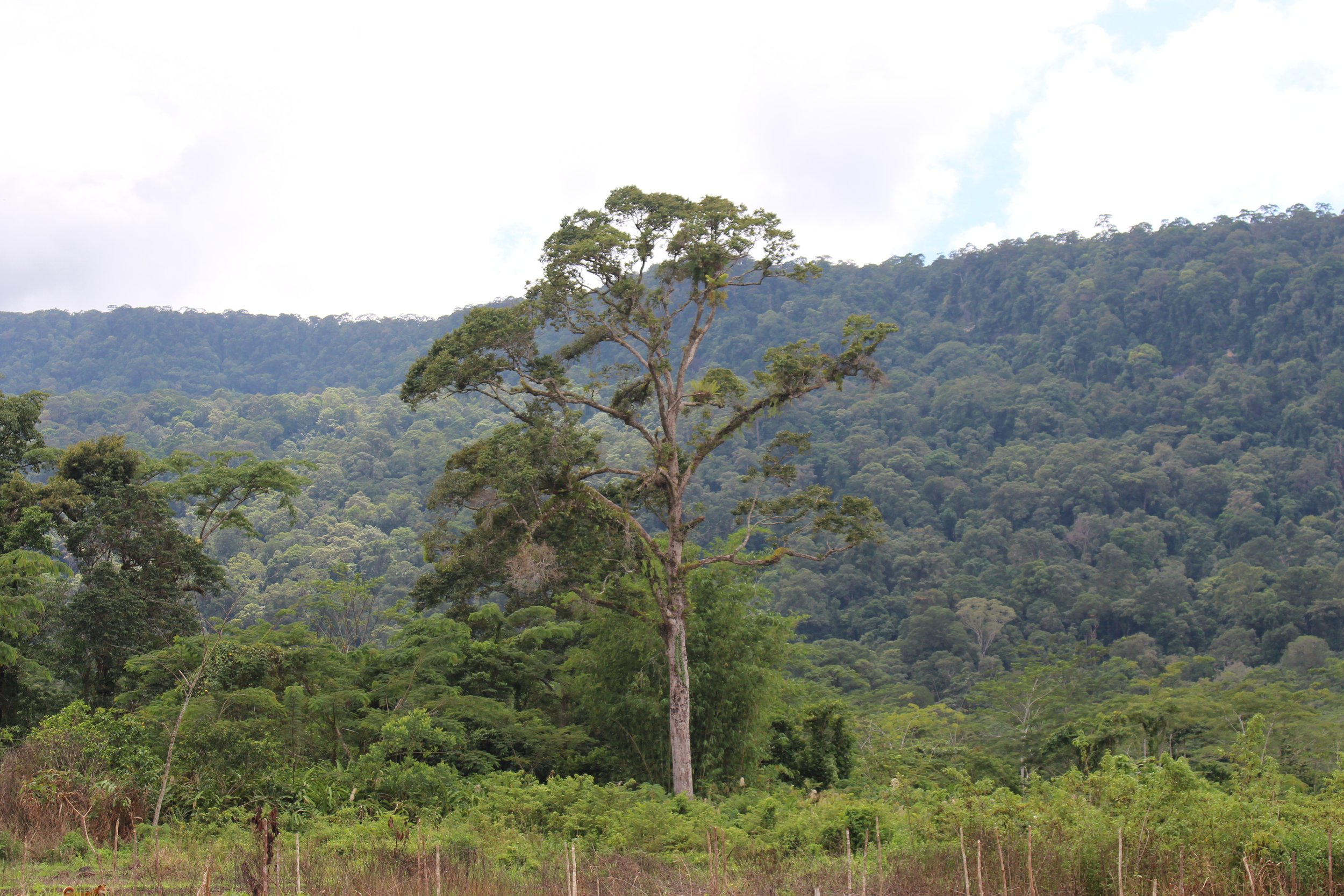

As far as this is good news, it comes with the sobering fact that the world has lost more than 7% of its intact forests in the last decade and carbon emissions due to tropical deforestation are accelerating. We know that climate change impacts the most vulnerable in our society the hardest. Drastic weather events such as floods and cyclones, sea-level rise effects on coastal areas, and shifting weather patterns affecting farming productivity will continue to have cascading negative impacts on Indonesia’s rural communities. There is an urgent need to implement climate change adaptation strategies to reduce such impacts for climate-vulnerable communities. This is why our holistic set of programs are underpinned by an ecosystem-based adaptation strategy, a cost-effective low-risk approach to build climate resilience for local communities and their surrounding ecosystems. This involves our capacity development programs supporting partner communities to develop resilient food systems through expediting sustainable agriculture and fishery practices that directly support short-term climate adaptation strategies. We combine this with our approach that provides both financial and non-financial incentives, enabling communities to adapt to the long-term impacts of climate change.
For the world to reach its ambitious climate goals, it has to recognize that there are no better stewards of the land and high-quality high-carbon ecosystems than the Indigenous peoples and local communities who have lived there for centuries. By working with local communities and shifting the balance of power back to local caretakers, we can turn the tides on global forest loss to help the world combat climate change.
This work is done in parntership with BKSDA Kalimantan Barat.
Thank you for reading, you can support our work here. If you have any questions please reach out via admin@planetindonesia.org.
Sign up for our monthly e-newsletter below and follow us on our social media pages: Facebook, Instagram, Linkedin, and Twitter to get timely updates on our activities, an insider’s look into the lives of front-line conservationists, and ongoing programs.

